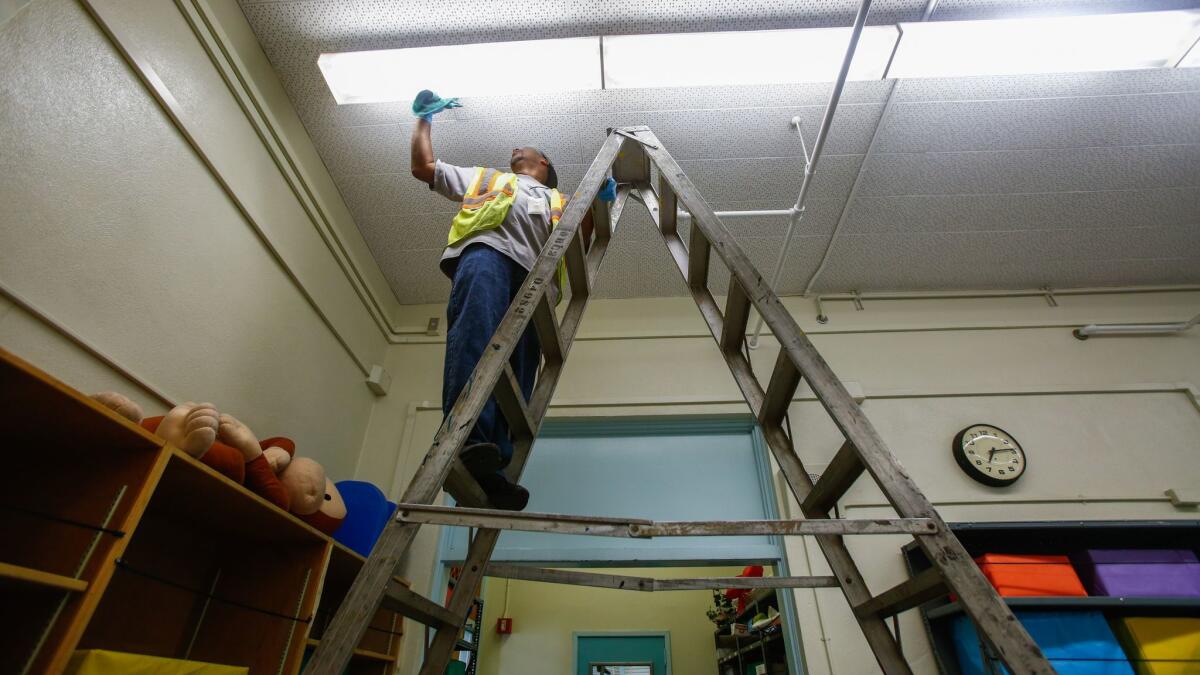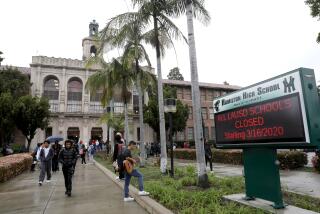L.A. school board approves three-year benefit package with some cost containment

The Los Angeles Board of Education on Tuesday approved a three-year benefits package that contains some costs but falls well short of the savings that district officials say is needed to keep the school system solvent.
The 60,000 employees of the Los Angeles Unified School District are not among the nation’s highest paid, but most enjoy comprehensive medical benefits for themselves and their families without paying monthly premiums. Such subsidies are rare in the workplace.
The package narrowly passed with support from four out of seven board members. Even board members who supported the agreement said they are concerned that the district’s budget could be careening toward a deficit, threatening programs for students.
The most important cost-saving step is that L.A. Unified will freeze the total annual amount it pays out of the general fund for healthcare benefits for the three years covered, 2018-20.
Under the agreement, the district will hold to the roughly $1.1 billion it currently pays for the benefits.
The freeze is intended to spare the general fund from having to absorb healthcare costs that have been rising more than 6% a year. Any additional costs will be covered by a healthcare reserve that has grown to about $300 million.
“For me there is great value in the containment of costs,” said school board President Monica Garcia, who voted yes along with George McKenna, Scott Schmerelson and Kelly Gonez. “We need good jobs and good schools.”
In L.A. Unified, the district negotiates with employee unions over how much to pay for healthcare, but the unions control how the money is spent. The unions determine which health plans to offer and how much, if anything, to charge employees for premiums and co-payments.
Healthcare costs are a major stress on the nation’s second-largest school system, particularly coverage of retirees. The district pays more than $20,000 annually for the healthcare of each retiree who is too young to qualify for the federal Medicare program, said Najeeb Khoury, the district’s chief labor negotiator, in an interview. Older retirees use district benefits as a healthcare supplement to cover what Medicare doesn’t, which costs the district about $7,100 per person each year.
As of January, the district was providing benefits for 4,768 pre-Medicare retirees and paying for supplemental coverage for 31,533 retirees old enough to receive Medicare. Retiree health benefits cost the district nearly $328 million in the 2016-17 school year, close to 6% of the budget.
Although Khoury supported the pact, he acknowledged that L.A. Unified has a problem with healthcare obligations. It would cost about $13.6 billion in today’s dollars to pay for all retiree health benefits over the next 30 years, and the district has put aside only a fraction of the necessary funding, Khoury told the board.
Over time, medical costs for retirees could hamstring the district’s ability to pay active employees and educate children, said board member Nick Melvoin.
“The freezing of the annual increases in this deal is a baby step in the right direction, but our dire financial situation requires at least an adult step,” said Melvoin, who voted no. “We undoubtedly need to secure more funding from the state…. We also need to start living within our means.”
Board member Ref Rodriguez, who had earlier signaled support for the deal, also voted no, expressing concern that the agreement might prove unaffordable by its third year.
Board member Richard Vladovic, who said he had to leave the meeting early, was not present for the vote.
Twitter: @howardblume
Twitter: @Sonali_Kohli
UPDATES:
Feb. 14, 3:35 p.m.: This article was updated to include the number of pre-Medicare and older retirees who receive benefits from L.A. Unified.
This article was originally published Feb. 13 at 8:45 p.m.
More to Read
Sign up for Essential California
The most important California stories and recommendations in your inbox every morning.
You may occasionally receive promotional content from the Los Angeles Times.











